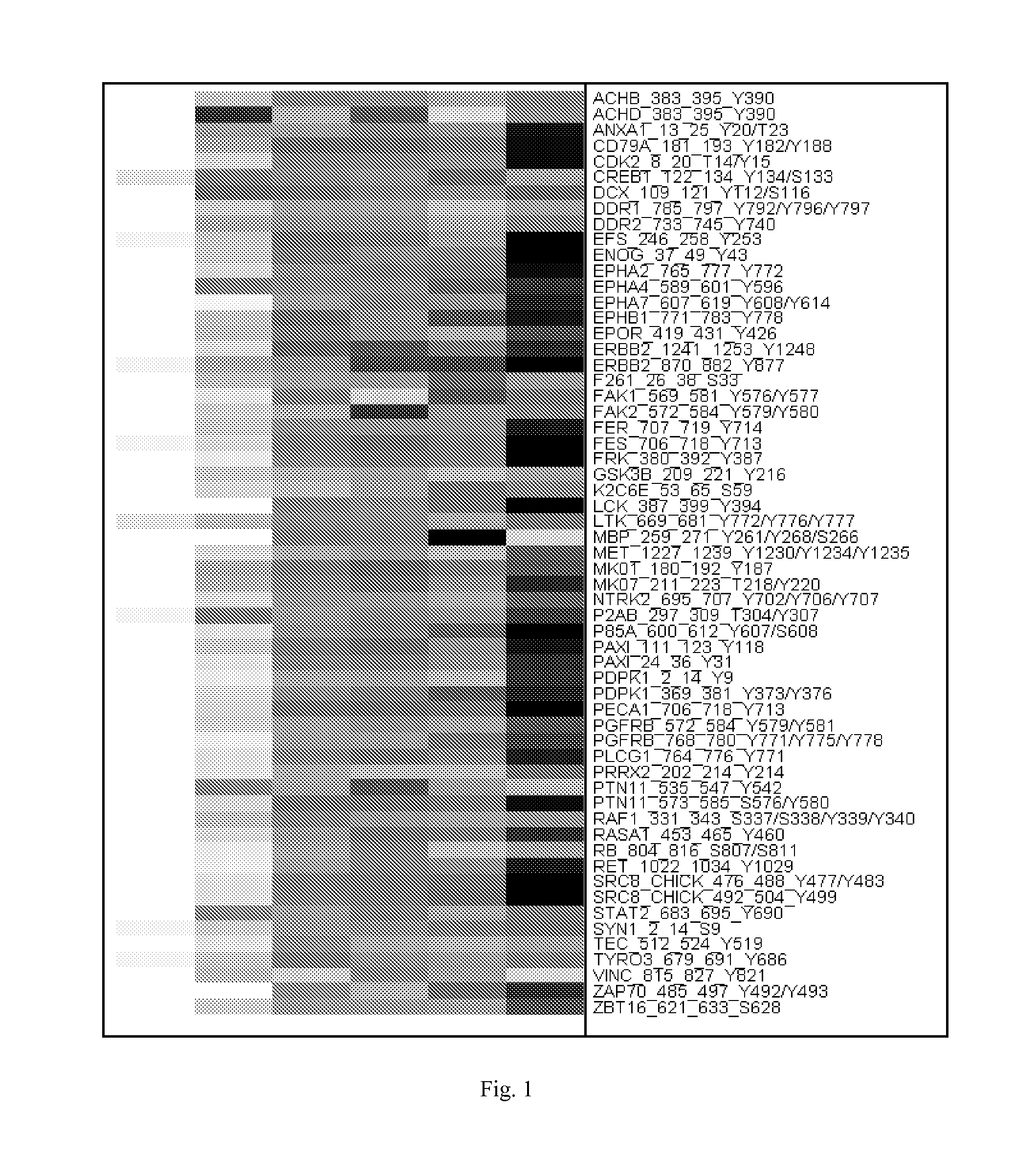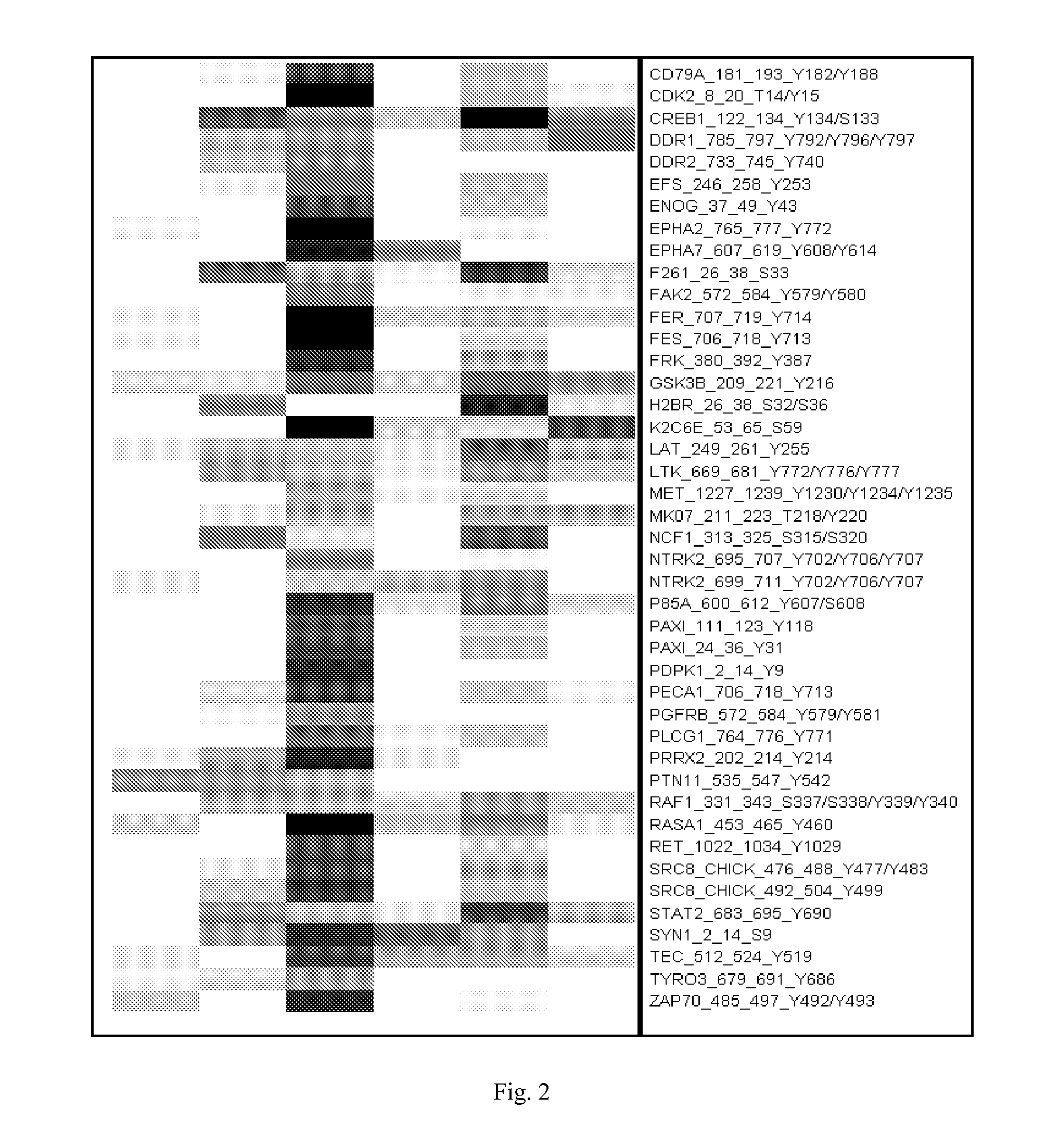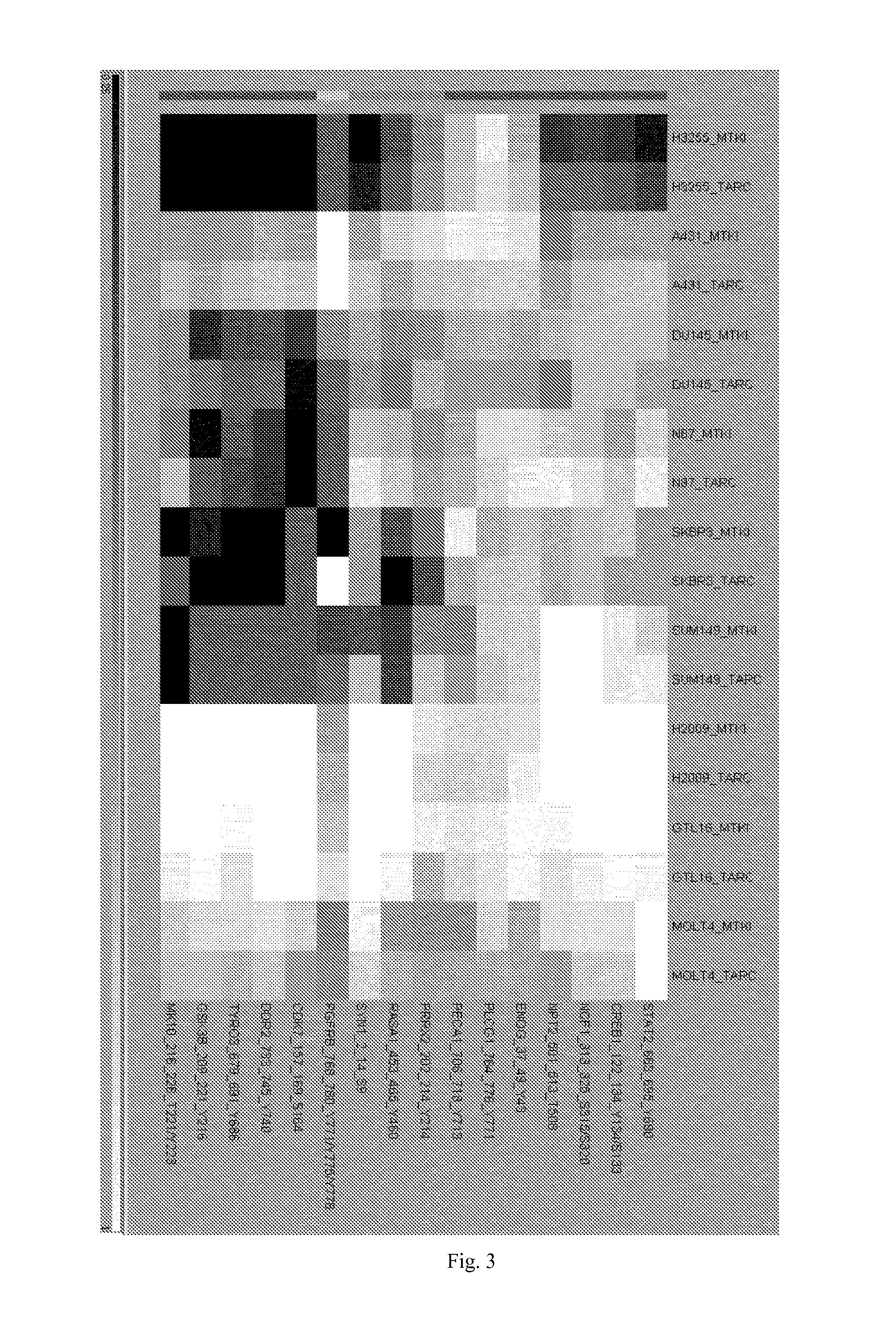Method for profiling kinase inhibitors
a kinase inhibitor and profiling technology, applied in the field of pharmacological profiling of compounds, can solve the problems of reducing the rate of new drug approval, increasing the cost of drug discovery and development, and limited advances in tools available for establishing the actions of agents in the complex biochemical network
- Summary
- Abstract
- Description
- Claims
- Application Information
AI Technical Summary
Benefits of technology
Problems solved by technology
Method used
Image
Examples
example 1
Generation of Signature Peptides in a 27-Cell Lines Panel for MTKI
[0146]It was tested whether the Pamchip peptide arrays are a useful tool to predict the response of a cell line to the multi-targeted kinase inhibitor, MTKI. MTKI inhibits the proliferation of a range of cell lines in vitro with widely varying IC50's. The lysates prepared from these 27 cell lines, representing diverse cancer cell types, were profiled on the peptide arrays in the absence or presence of 5 μM MTKI, in 6 replicates for each condition. In this panel, 13 cell lines were defined as responder cell lines (IC5050>10 μM). Intermediary cell lines and cell lines with highly variable IC50 measurements were omitted from the analysis. The experiment included the highly responsive H3255 lung cancer cell line, which overexpresses mutant EGFR L858R. This mutant variant is highly responsive to MTKI, which is an ATP-competitive compound that binds to the active conformation of EGFR (similar to erlotinib and gefitinib). Ac...
example 2
Generation of Signature Peptides in Xenograft Tumors for MTKI
[0149]To explore whether a similar approach allows for the classification of responder and non-responder tumors, the same strategy as above was applied to 12 different xenograft tumors, which were subcutaneously grown in nude immuno-compromised mice from human cancer cell lines. These tumors can be divided in 6 responsive tumors and 6 non-responsive tumors. The responsive tumors are arranged according to their responsiveness to MTKI in vivo, ranging from abrupt tumor regression of H3255, A431 and H322 tumors, to potent inhibition of tumor growth for DU145, SUM149 and BT474. The non-responsive tumors (H460 and H441, HT29, PC3, SKOV3, H1703) are all non-responsive to MTKI in vivo. Lysates were made from homogenized frozen tumor blocks and analyzed in the absence or presence of 5 μM MTKI, as before. Overall, the phosphorylation rate of most peptides was significantly faster in tumor lysates compared to the corresponding cell ...
example 3
Human Frozen Tissue and Tumor Samples
[0152]The same approach as for the xenograft tumor lysates was applied to human tissue (frozen tissue purchased from Proteogenex). Snap-frozen lung tumors and normal matched tissue were tested. It was found that all samples gave robust signals, and that different tumors resulted in different responses to MTKI1 treatment, suggesting that this technology is applicable to frozen human tissue in general and may predict response of tumors (and other tissue) to MTKI1 or other tyrosine kinase inhibitors.
PUM
| Property | Measurement | Unit |
|---|---|---|
| volume | aaaaa | aaaaa |
| pharmaceutically acceptable acid or | aaaaa | aaaaa |
| chemical probes | aaaaa | aaaaa |
Abstract
Description
Claims
Application Information
 Login to View More
Login to View More - R&D
- Intellectual Property
- Life Sciences
- Materials
- Tech Scout
- Unparalleled Data Quality
- Higher Quality Content
- 60% Fewer Hallucinations
Browse by: Latest US Patents, China's latest patents, Technical Efficacy Thesaurus, Application Domain, Technology Topic, Popular Technical Reports.
© 2025 PatSnap. All rights reserved.Legal|Privacy policy|Modern Slavery Act Transparency Statement|Sitemap|About US| Contact US: help@patsnap.com



